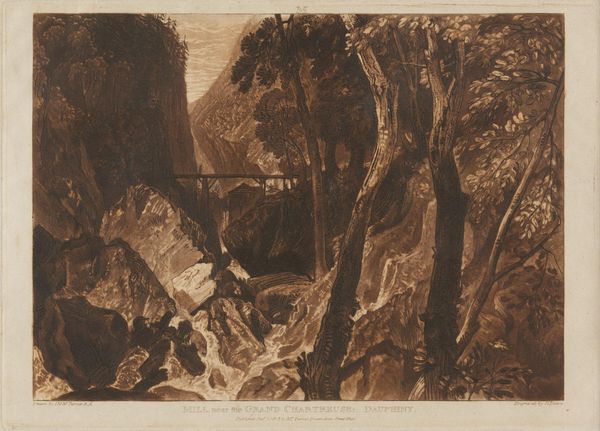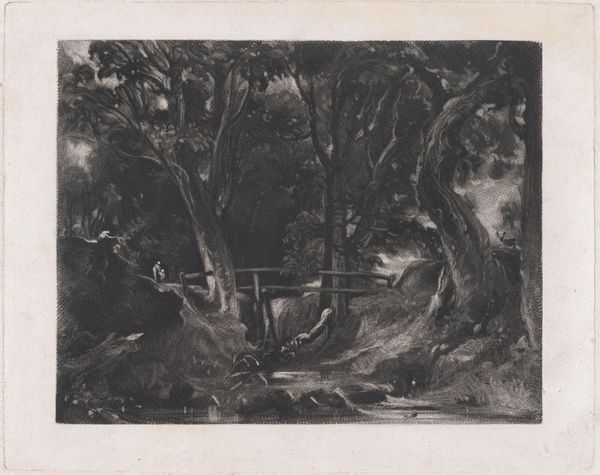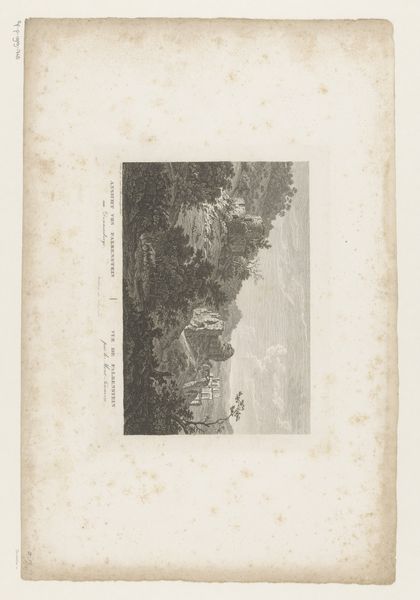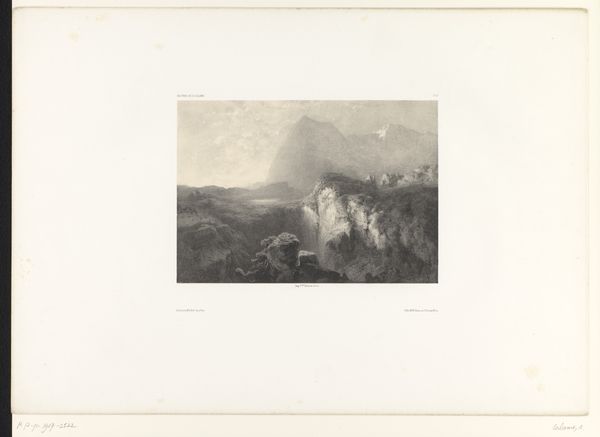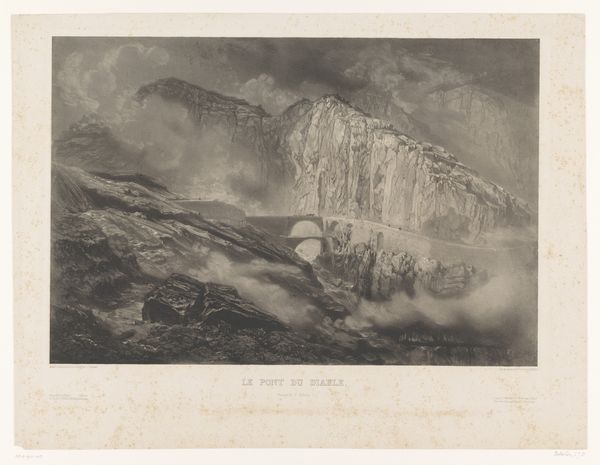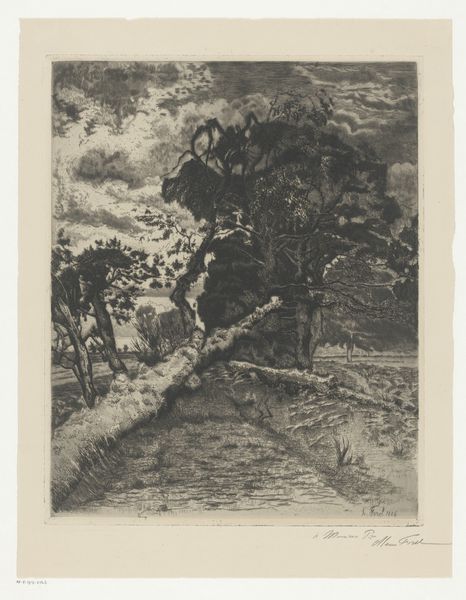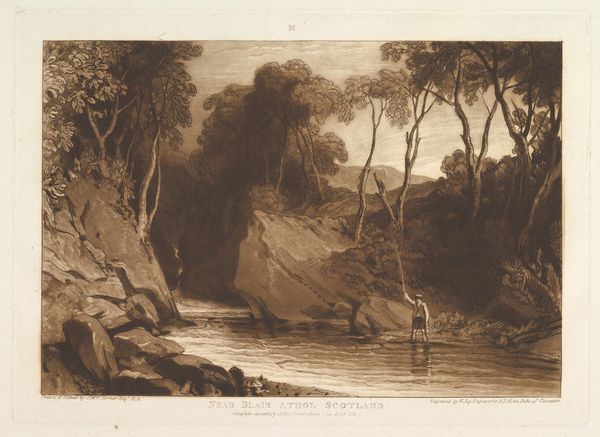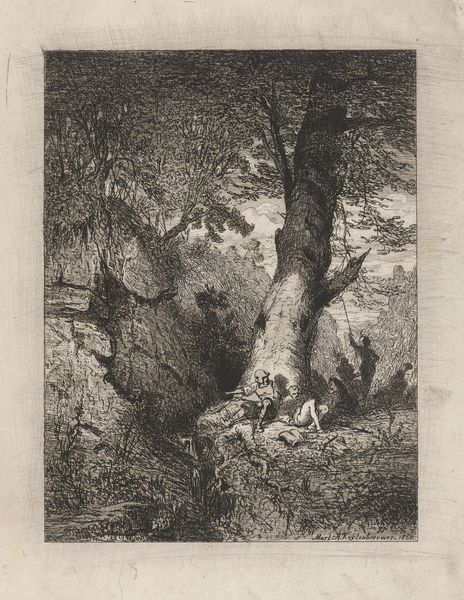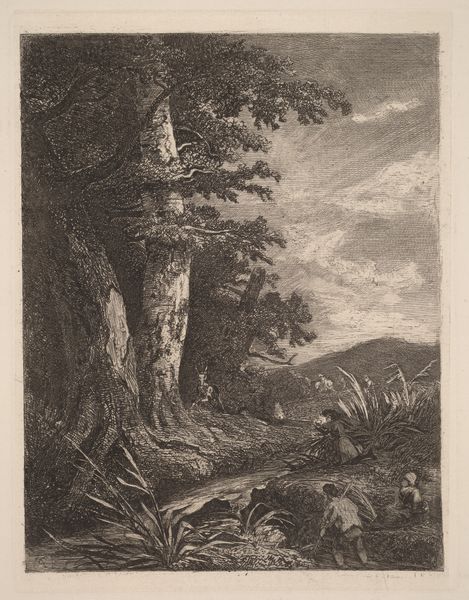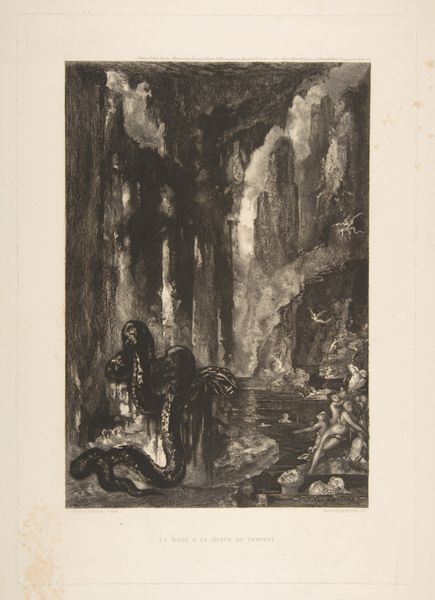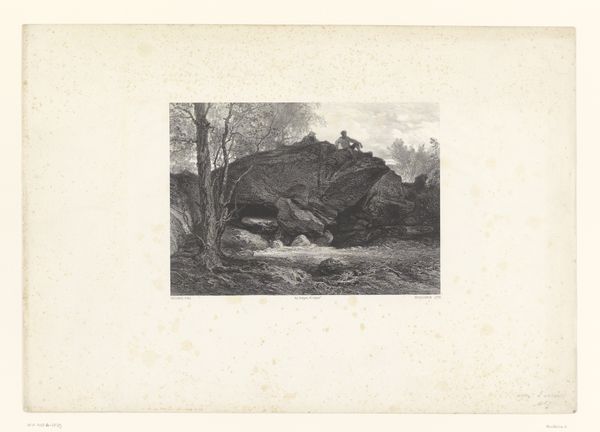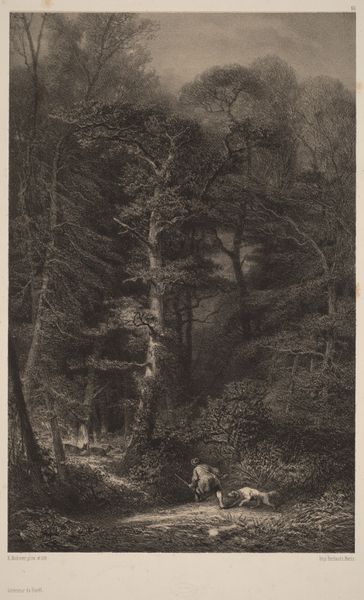
Mill Near the Grand Chartreuse, Dauphiny (Liber Studiorum, part XI, plate 54) 1816
0:00
0:00
drawing, print, etching
#
drawing
# print
#
etching
#
landscape
#
form
#
romanticism
#
line
#
history-painting
Dimensions: plate: 7 7/16 x 10 3/16 in. (18.9 x 25.9 cm) sheet: 8 1/8 x 11 1/2 in. (20.6 x 29.2 cm)
Copyright: Public Domain
This etching in sepia ink, “Mill Near the Grand Chartreuse, Dauphiny” was produced by J.M.W. Turner as part of his “Liber Studiorum” around 1811. The image, part of a series, reflects the Picturesque aesthetic popular in England at the time. Turner's focus on the rural landscape can be viewed as a reaction to the industrial revolution, a nostalgic look back at a pre-industrialized past, and we see a world in which nature and labour are integrated. "Liber Studiorum", meaning "Book of Studies", reveals the institutional structures that underpinned artistic production in 19th century Britain. Turner used the publication to demonstrate the range of his artistic abilities, and also perhaps as a riposte to the Royal Academy, of which he was a member, but always remained ambivalent about its institutional power. Art historians use a wide range of resources to better understand works like this, including historical surveys, cultural studies, and critical theory. The meaning of art is always contingent on its social and institutional context.
Comments
No comments
Be the first to comment and join the conversation on the ultimate creative platform.
